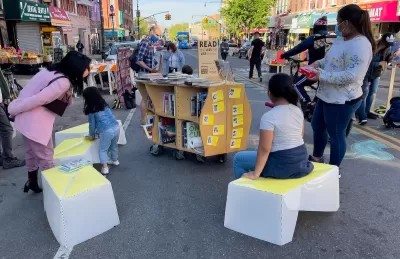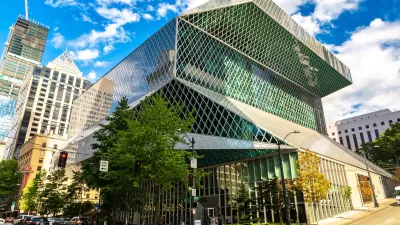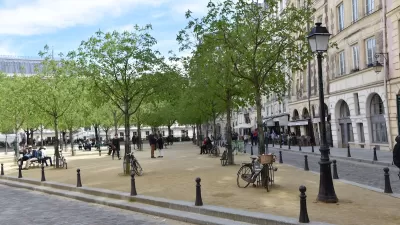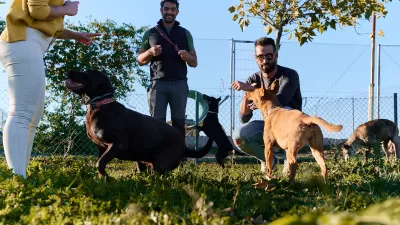Public parks, libraries, and other social infrastructure foster community connections and stave off loneliness. Why are they increasingly deprioritized in civic life?

In a piece for the Deseret News, Mariya Manzhos, explaining her own experiences with public spaces during the pandemic and early motherhood, highlights the ways that public parks and other ‘social infrastructure’ are shown to reduce social isolation and foster a sense of community. For Manzhos, easy access to local libraries, parks, and shops alleviates some of the inconveniences of cramped urban life.
According to sociologist Eric Klinenberg, social infrastructure “is especially beneficial for children, the elderly and those who are limited to move beyond the places where they live. It’s the communal gathering places that might also foster a sense of civic responsibility.”
Also known as ‘third places,’ communal gathering places have long been touted by urbanists and sociologists as an important part of urban communities, fostering connection and interaction. “Studies have shown that just having a diversity of folks in your life … more informal and infrequent and unplanned, can be really protective for health and well-being,” says Jessica Finlay, an assistant professor in the Institute of Behavioral Science and the department of geography at the University of Colorado, Boulder.
FULL STORY: Can public parks save us from loneliness?

Trump Administration Could Effectively End Housing Voucher Program
Federal officials are eyeing major cuts to the Section 8 program that helps millions of low-income households pay rent.

Planetizen Federal Action Tracker
A weekly monitor of how Trump’s orders and actions are impacting planners and planning in America.

Ken Jennings Launches Transit Web Series
The Jeopardy champ wants you to ride public transit.

Crime Continues to Drop on Philly, San Francisco Transit Systems
SEPTA and BART both saw significant declines in violent crime in the first quarter of 2025.

How South LA Green Spaces Power Community Health and Hope
Green spaces like South L.A. Wetlands Park are helping South Los Angeles residents promote healthy lifestyles, build community, and advocate for improvements that reflect local needs in historically underserved neighborhoods.

Sacramento Plans ‘Quick-Build’ Road Safety Projects
The city wants to accelerate small-scale safety improvements that use low-cost equipment to make an impact at dangerous intersections.
Urban Design for Planners 1: Software Tools
This six-course series explores essential urban design concepts using open source software and equips planners with the tools they need to participate fully in the urban design process.
Planning for Universal Design
Learn the tools for implementing Universal Design in planning regulations.
Heyer Gruel & Associates PA
Ada County Highway District
Institute for Housing and Urban Development Studies (IHS)
City of Grandview
Harvard GSD Executive Education
Toledo-Lucas County Plan Commissions
Salt Lake City
NYU Wagner Graduate School of Public Service





























